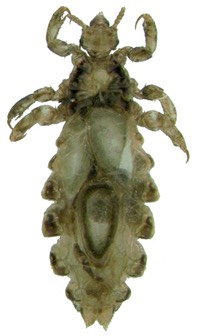Mechanically removing lice and nits can be an effective method, but it is time consuming and often fails to eliminate an infestation. Because most eggs present will likely be non-viable, their removal is often impractical. Head lice and their eggs may be eliminated from the hair by combing the hair with an adequate louse or nit comb. Comb daily or at least every few days until no live lice are discovered for about two weeks. Use illumination, magnification and a good louse or nit comb to locate and remove the offending insects. Although the hair may appear 'peppered' with eggs, there generally are fewer than a dozen active lice on the head at any time. Adult female lice usually cement each egg to the base of a hair shaft near the skin. As the hair grows (from the base), these attached eggs are transported away from the scalp. Eggs more than about one-quarter of one inch away from the scalp are nearly always hatched and do not, by themselves, indicate an active infestation.
Diverse types of fine-toothed combs may be included within packages of pediculicides or they may be purchased from virtually any drug store, pet supply store (often at a discount) or via the Internet. Some louse combs are better than others; their effectiveness depends on a) their composition (metal vs. plastic) and construction (length and spacing of the comb teeth), b) the texture of the hair to be combed, c) the technique used to comb, and d) the time and care expended in the effort. Whereas straight hair is usually readily combed, tight curls may present an impossible and impractical challenge. Hair should be cleaned and well-combed or brushed to remove tangles before attempting to use a louse comb. Clean the louse comb frequently to remove any lice or eggs caught between the teeth of the comb.
If the hair is readily combed, the process may require just minutes per day. If it requires significantly more time or effort, one should question whether this method is wise or practical. Some parents prefer to comb, even if it may require several hours each night for several nights to tackle the problem. An entertaining video may help keep the child (and adult) occupied during this exercise. Sit behind the child, and use a suitably bright (but cool) light, and magnification if available, to inspect and comb through the hair, one small section at a time. Repeat until no more active lice are observed. Some parents report that water, vegetable oils or hair conditioners help lubricate the hair and ease the combing process; others report that these lubricants make it more difficult to see the eggs.
‘Electronic’ louse combs that resemble small bug ‘zappers’, or those with oscillating teeth are available and are claimed to be superior to standard combs. Such devices would seem to offer little advantage, if any, over a well-designed traditional louse comb. Teeth of these devices may not effectively reach to the scalp and may not kill or remove eggs.

